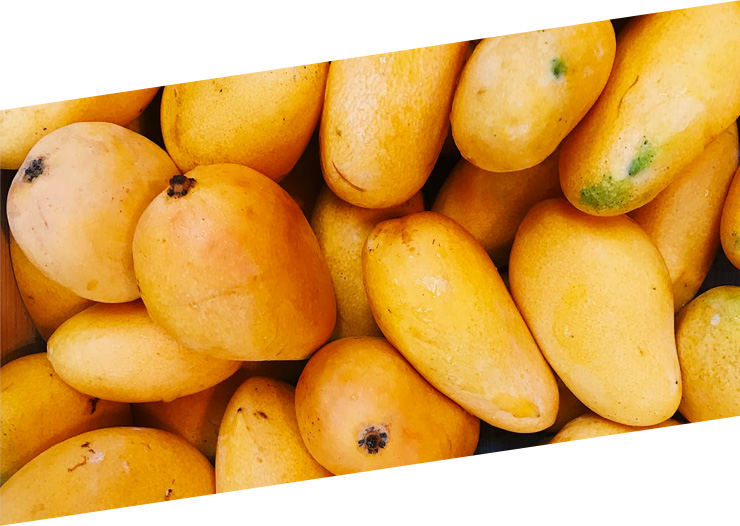
Innovation Ushers In New Era Of Plant-based Flavors, Applications and Products
Industry Trends, Ingredient Trends, Non-dairy Ingredients
New Products Satisfy a New Kind of Consumer focused on Plant-based Options
Bluegrass Ingredients On-site Hiring Event | March 19 | Glasgow, KY.
Today, mangos are the ninth most popular fruit on restaurant menus nationwide, and consumer appetite for the flavor is projected to continue to rise.
It’s not hard to see why.
Consumers have come to expect mango flavors at every meal of the day – in yogurts at breakfast time, on salads and on sandwiches for lunch and added to seafood dishes and sauces on the dinner table. They’re eating mango water ice for dessert. They’re even drinking mango margaritas at happy hour and reaching for a mango seltzer with their meal. Mango is a defining flavor across multiple ethnic cuisines, including Asian, Southeast Asian and South American.
Mango has become an in-demand flavor on its own and as a complement to sweet, salty or spicy ingredients. It’s one of the few flavors that works in a wide variety of consumer segments. Health-conscious consumers reach for nutritious and filling post-workout mango smoothies. Sports bars and pit masters slather their wings with mango-habanero hot sauce. Consumers looking for a more exotic experience may opt for a mango lassi drink.
Mango’s unique flavor has become an essential offering in a wide variety of products and dishes. Today’s consumers expect bright, fresh mango taste no matter the application.

Food manufacturers and flavor houses recognize that delivering that fresh flavor is often a considerable challenge. Anyone who’s ever tried to cut and peel a mango they bought at their local market can relate to the difficulties of working with the notoriously tricky fruit. Peeling and preparing mangos can be a labor intensive – and expensive – process.
What’s more, mangos present significant logistical challenges. Mango is not native to the US and cannot be grown here on a commercial scale. That creates more complicated sourcing and supply chain issues in the production process and shortened or unpredictable shelf life.
Mangos may be a trending flavor, but the market continues to seek more effective ways to deliver that flavor at cost and scale.
Bluegrass Ingredients has a product development approach centered on analyzing emerging market trends and consumer preferences. Given mango’s rising profile and the challenges of working with the fruit in its fresh form, Bluegrass saw opportunity in a more forgiving application. It set about using its innovative research and development process to distill mango’s essential flavor into a product that is more versatile and cost-effective than fresh mangos.
Building customized and consumer-ready flavors is a complex process. It’s part advanced food science, part trial and error. Bluegrass is often tasked with matching an exact flavor profile. In other instances, such as nondairy substitutes, the challenge is in recreating a familiar flavor and texture using all new ingredients. In the case of the company’s mango powder, the process was more straightforward, though no less innovative.
It began with fresh, high-quality mangos imported from India.
The company worked with in-house flavor experts and customers to build a flavor profile and detailed product specifications that would meet market demands. In this conceptualization phase, no detail is too small for Bluegrass technicians – color, granulation, smell and texture combine with taste to bring the product to life.
With the product specifications established, engineers used custom spray-drying and dry–blending techniques to deliver high quality flavor and texture profile in powder format. That powder was then rigorously tested and reviewed by internal and external flavor experts. This testing included detailed comparisons to other mango applications on the market, including fresh mango and mango puree, and analyses of various applications from the company’s test kitchen. It’s a thorough and meticulous process — Bluegrass testers aren’t satisfied until any powder they’re evaluating tastes and feels like the food’s original form.
With a formulation finalized, the mango powder was ready for sample development, distribution and initial applications.

With consumers clamoring for mango products, Bluegrass’ innovative powder gives food manufacturers an accessible way to give it to them. It offers less logistical headaches and better shelf life than whole mango or mango puree. As a result, food manufacturers are finding new applications and products for mango powder all the time.
Mango powder is the latest in a series of fruit powders Bluegrass has concepted, developed, tested and distributed. As citrus and fruit flavors have grown more popular, Bluegrass has created products including orange, tangerine, pineapple, lemon and lime powders. These flavors add a freshness and citrusy “pop” to a wide variety of products and applications.
They create a competitive advantage in the push to create exciting new products and introduce modern flavors to classic offerings.
As more fruit products enter the market, Bluegrass anticipates increased customer-driven partnerships to create new fruit flavors or combine existing powders to create custom fruit blends. These collaborations will drive future innovations in the fruit powder space in anticipation of evolving customer trends — the “next mango” is just waiting to be found and formulated.